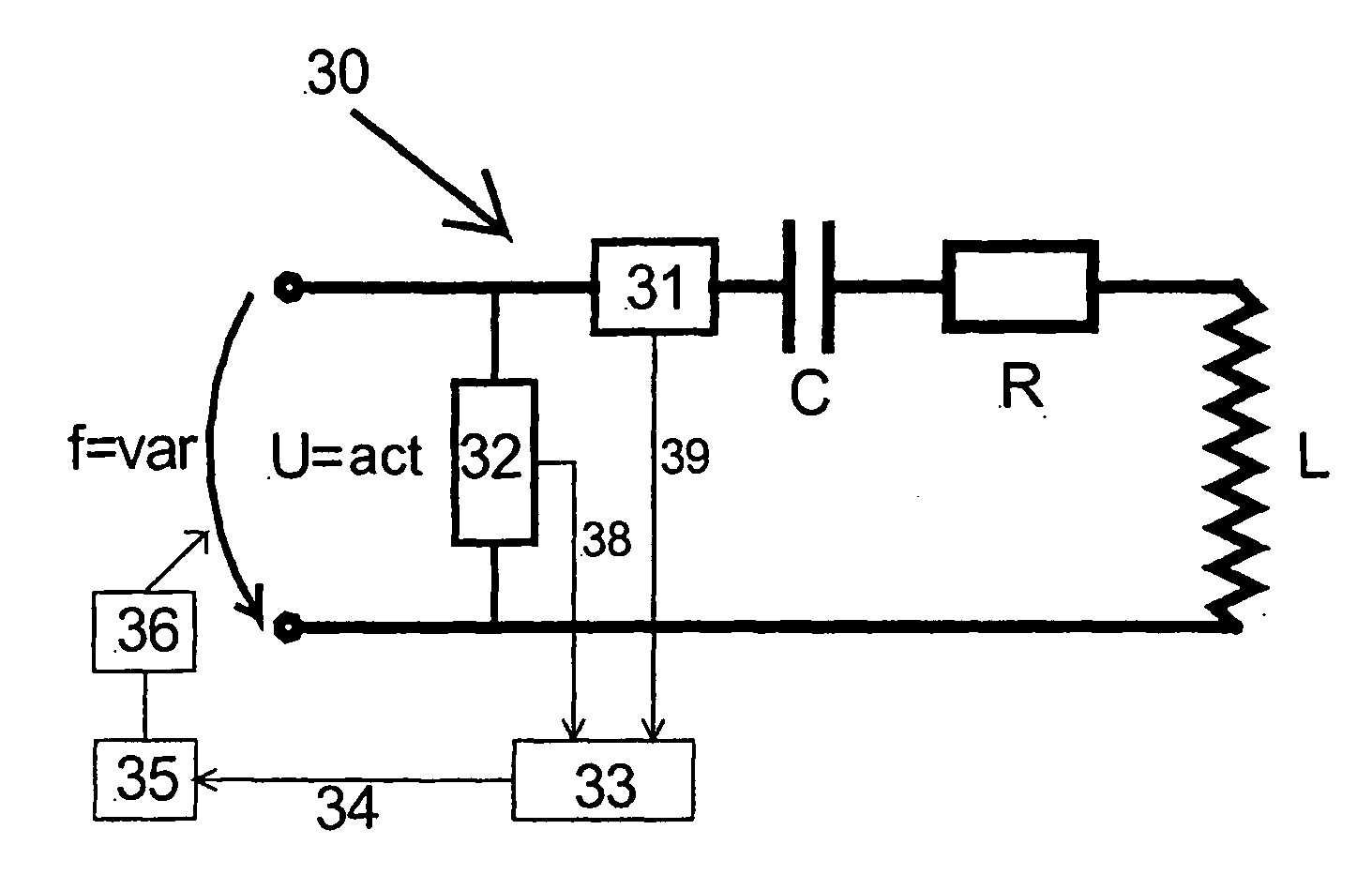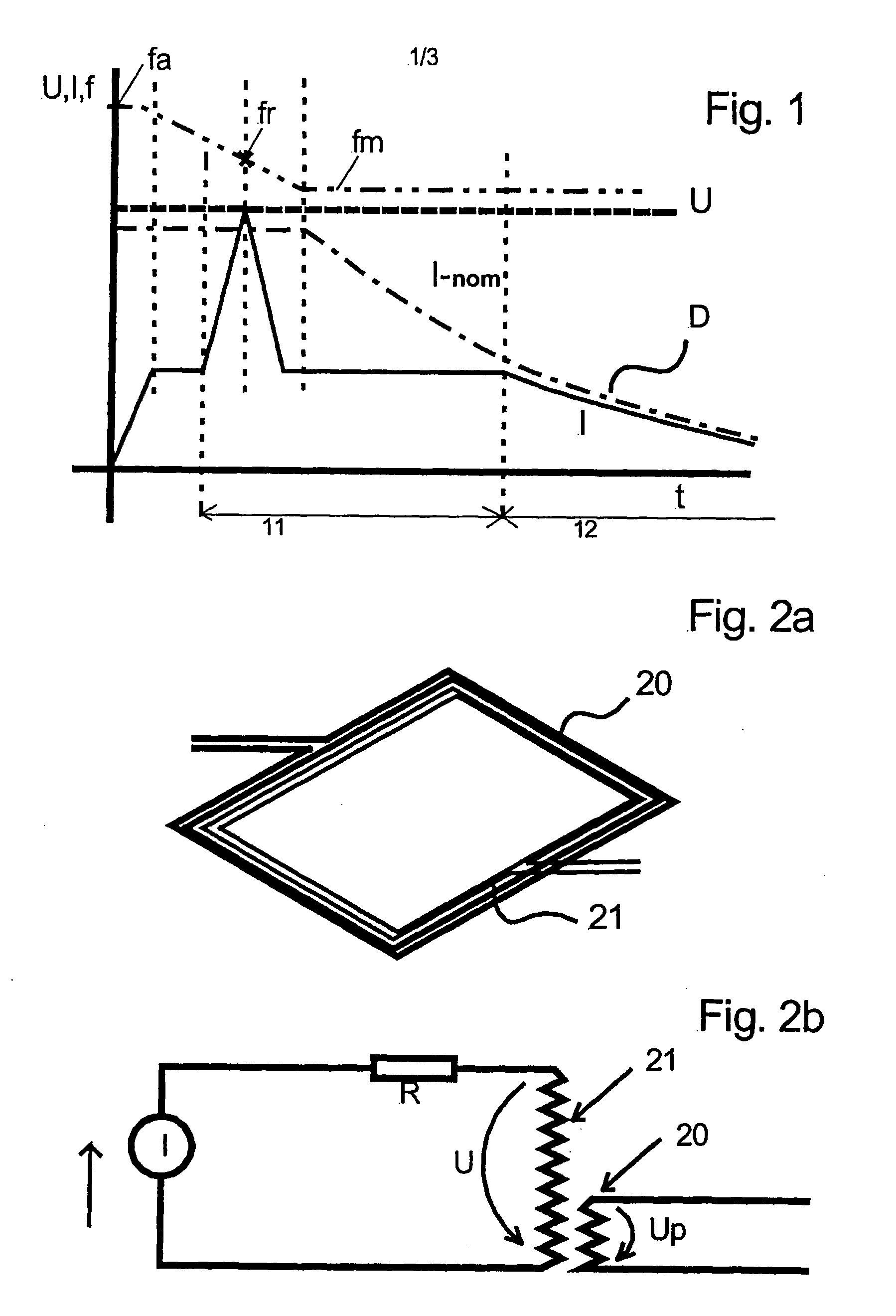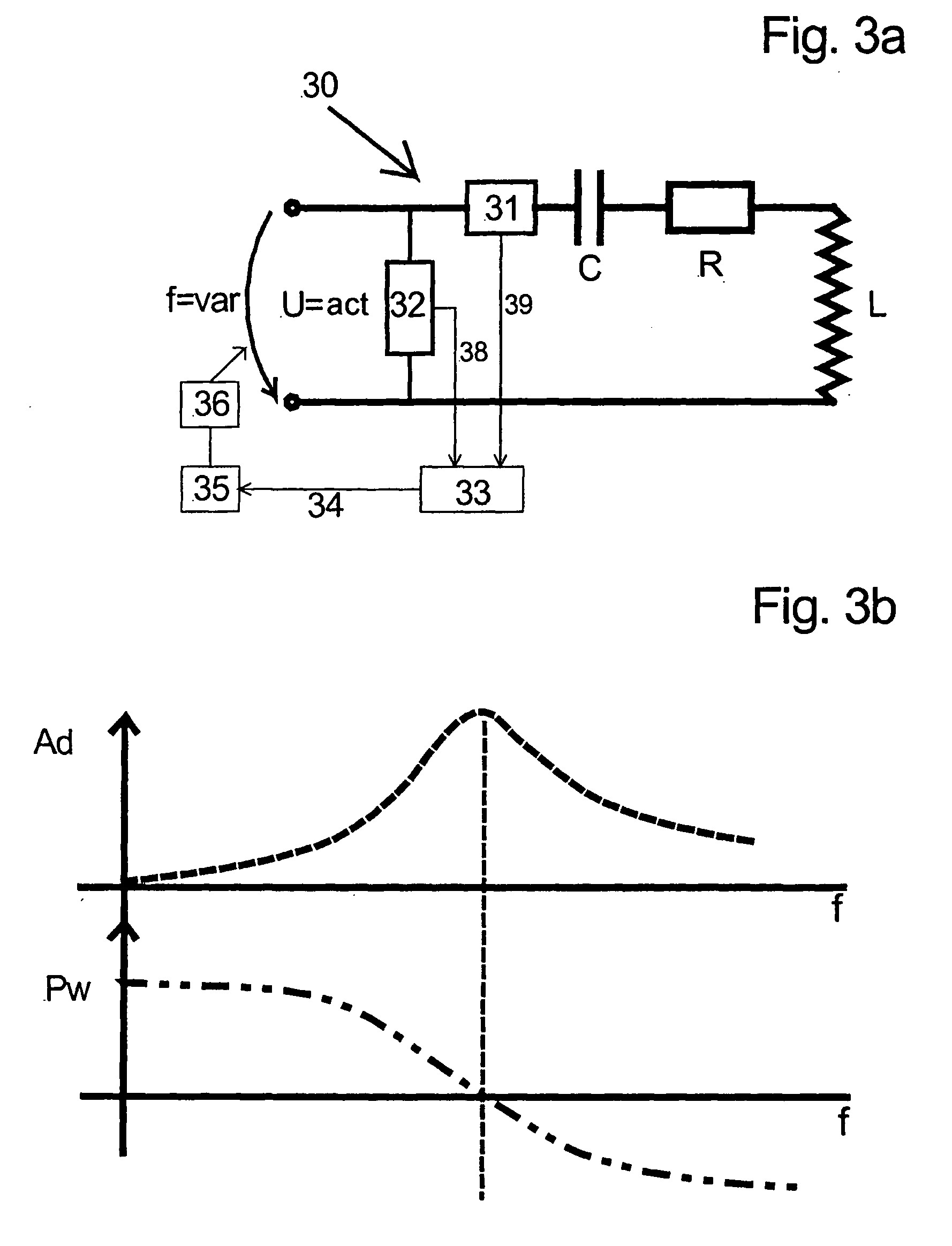Automatic setting of the resonant frequency on demagnetization of different parts in demagnetization installations
a technology of demagnetization and automatic setting, which is applied in the direction of electrical equipment, magnetic bodies, relays, etc., can solve the problems of increasing the problem of residual magnetism in objects, unfavorable collection of ferromagnetic particles on the edges of parts with residual magnetism, and other risks, so as to achieve significant increase in the output of the demagnetization installation
- Summary
- Abstract
- Description
- Claims
- Application Information
AI Technical Summary
Benefits of technology
Problems solved by technology
Method used
Image
Examples
Embodiment Construction
[0021] The course of the current I during the time t is represented in FIG. 1, according to the method according to DE 30 05 927 A1. The current course I is set against the optimal current course I-nom. In a first time interval 11, the demagnetization is effected in an uncontrolled manner on traveling through the resonant point at any location 12. A controlled demagnetization is effected with a controlled current only in the region of the second time interval. The decay of the curve D is only controlled and thus reproducible in the part section 12. The frequency is reduced from a high initial frequency fa to a demagnetisation frequency fm. Thereby, the resonant frequency fr is reached at some point therebetween.
[0022] An alternative procedure according to FIG. 2a operates with an auxiliary coil or a low cross section, which determines the admittance of the auxiliary coil 21, and thus the inductance of the demagnetisation coil 20, and after further conversion, the corresponding reso...
PUM
 Login to View More
Login to View More Abstract
Description
Claims
Application Information
 Login to View More
Login to View More - R&D
- Intellectual Property
- Life Sciences
- Materials
- Tech Scout
- Unparalleled Data Quality
- Higher Quality Content
- 60% Fewer Hallucinations
Browse by: Latest US Patents, China's latest patents, Technical Efficacy Thesaurus, Application Domain, Technology Topic, Popular Technical Reports.
© 2025 PatSnap. All rights reserved.Legal|Privacy policy|Modern Slavery Act Transparency Statement|Sitemap|About US| Contact US: help@patsnap.com



